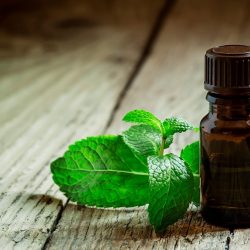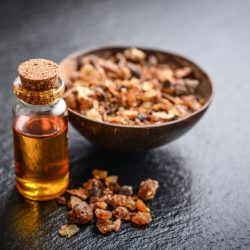Welcome to the fascinating world of the Sweet Orange, a multi-faceted fruit that awakens the senses and enriches our health. Scientifically known as Citrus sinensis, this juicy delight is not only a citrus fruit prized for its sweet flavour, but also a treasure trove of therapeutic benefits. In this article, we delve into the heart of the sweet orange, exploring its history, cultivation and the incredible properties of its essence. Whether you’re a natural remedies enthusiast, a gardening enthusiast or simply curious to discover the secrets of this iconic fruit, this comprehensive guide is designed to offer you an enriching perspective on the sweet orange, from its distant origins to its modern applications in aromatherapy and phytotherapy. Embark with us on this aromatic journey and discover how the sweet orange can enhance your daily life, both taste-wise and therapeutically.
What are the characteristics of Sweet Orange?
The sweet orange, whose botanical name is Citrus sinensis or Citrus aurantium L. var. dulcis, belongs to the Rutaceae family. The term “sweet orange” refers to the zest of the orange.
What are its botanical attributes?
The sweet orange, commonly known by its scientific name Citrus sinensis, offers not only a burst of juicy flavour and a rich source of vitamin C, but also an excellent source of vitamins and minerals a rich source of vitamin C but is also a prime specimen in citrus plantations in subtropical regions. Born in the far-flung lands of China, the sweet orange is familiar with both hot and humid climates, with a penchant for a noticeably cooler season.
Citrus sinensis is a medium-sized tree with a generous canopy. The young shoots are distinguished by the presence of thorns, while the oval leaves are revealed, 6 to 12 cm long, with a winged petiole. They are evergreen, glossy green on the obverse and paler on the reverse. Although the tree can reach heights of up to 8 metres under optimum conditions, it does very well in containers.
From late spring onwards, the orange tree reveals small, waxy white flowers, exhaling an intoxicating fragrance. The fruit, sweet oranges, reach maturity between autumn and winter. Round in shape and varying in diameter from 4 to 12 cm, oranges retain a green rind unless exposed to the cold. It’s important to note that commercial oranges frequently undergo treatment and colouring to achieve the perfect orange hue.
There are several varieties of Citrus sinensis and other species within the genus, including Citrus lemon (the lemon), Citrus aurantium (bitter orange), and Citrus aurantifolium (lime), each with its own specific characteristics and applications.
How do you grow them?
In terms of substrate ,Citrus sinensis prefers rich, well-drained soil with an acid pH. A composition of clay soil, mixed with a draining substrate such as pozzolan or non-calcareous sand, and decomposed compost, is ideal. When growing in pots, it is advisable to incorporate a bed of clay balls at the bottom of the container, ensuring effective drainage and preventing any water retention that could be harmful to the orange tree. Watering should be deep and regular throughout the growing season, taking care to allow the surface substrate to dry out between applications of water.
Sweet oranges thrive in generous sunlight and in a location sheltered from prevailing winds. Although hardy, this citrus prefers frost-free areas for planting in the ground. In other parts of France, for example, it is best grown in containers, with a summer period outdoors and overwintering in a frost-free greenhouse or conservatory.
Orange trees require a nutritious diet, with a balanced supply of N,P,K fertiliser from early spring until September. Pruning to encourage branching and maintain a harmonious silhouette is generally carried out post-harvest, taking care to balance the branches and aerate the centre of the tree.
What are the uses of Sweet Orange oil?
Sweet Orange oil is obtained by cold expression of the pericarp of Citrus Sinensis.
How does it work?
Sweet Orange essential oil is mainly composed of :
- Monoterpenes (~97%): limonene, myrcene, alpha-pinene
- Monoterpenols
- Aldehydes
- Coumarins and furocoumarins
Sweet Orange oil has a significant concentration of limonene and myrcene. These specific molecules give this essential oil its main properties.
Sweet Orange oil, which contains over 90% limonene, has bactericidal, antifungal and antiviral properties. It acts effectively against various fungi responsible for lung infections, while disinfecting the air in the room. It is therefore highly recommended for use as an air freshener.
This essential oil helps to reduce stress and promotes relaxation thanks to its spasmolytic and anxiolytic action, as well as facilitating sleep.
Limonene stimulates digestion by acting on gastric motility, relieving nausea and preventing gastric hyperacidity by neutralising certain acids. It also has choleretic and cholagogic properties, promoting the production of bile by the liver and its elimination in the intestine. This action facilitates the digestion of fats and helps to detoxify the liver, as bile neutralises certain toxins. Finally, limonene helps expel intestinal gas.
What are the indications for this essence?
From a scientific point of view, limonene has a number of distinctive properties. The substance is distinguished by its calming and sedative which are particularly pronounced. It is also recognised for its antiseptic potential and its ability to purify the atmosphere, both of which are rated as moderately high. Its anti-inflammatory nature and properties as a digestive tonic and carminative are also noteworthy, both rated as moderately high.
According to traditional indications, it is particularly effective for alleviating anxiety, stress and sleep disorders, but also for purifying a vitiated atmosphere and facilitating digestion when this is not linked to a pathology.
In cosmetics, this substance is of particular interest as a potential agent for toning the epidermis. Its application could contribute to a significant improvement in skin tone and vitality.
In terms of energetic properties, this entity appears to encourage the development of joie de vivre and creative power. It also offers support by helping to release control. This enables us to realise our full potential and to approach change with serenity. Highly Cartesian individuals, who rely mainly on the mind to understand phenomena, may benefit from using it. In addition, it offers peace of mind to people who are tormented by possible disaster scenarios in unfamiliar terrain. It also makes it easier to leave our comfort zone and helps to break stagnation. What’s more, it could prove useful for people who are bored and find it difficult to communicate with others they consider “intellectually inferior”.
Note that the efficacy and safety of using this substance must be validated by in-depth scientific studies, and that thoughtful, informed use is always recommended.
Which dosage to choose?
Using essential oil to remedy various ailments or conditions involves different application methods depending on the specific needs encountered.
Practitioners recommend atmospheric diffusion of the essential oil in ambient air considered stale or in a climate perceived as difficult. The aim is to purify the space concerned and bring a calming element to the environment.
For cases of difficult digestion, practitioners generally recommend oral administration, commonly suggesting a dose of 1 drop, to be administered three times a day, to ease the digestive process. For stress or insomnia, they may adopt a mixed use protocol. This includes oral ingestion of 1 drop of the essential oil, placed on a neutral support, 2 to 3 times a day, combined with direct olfaction at opportune times, to provide relaxation and promote restful sleep.
These recommendations, based on current dosages, aim to offer alternative solutions for using essential oils to address common concerns relating to air quality, digestion and emotional and physical well-being.
How did the Sweet Orange come to be part of our daily lives over the centuries and across the continents?
The orange tree is thought to have originated in the Malay Archipelago at least 20 million years ago, at a time when it still formed a block of land attached to Asia and Australia. The sweet orange, or Citrus sinensis, is thought to have been introduced in the 15th century and then cultivated throughout the Mediterranean basin. First of all, we should be talking about oranges. In fact, it was the bitter or bigarade orange that first appeared on European soil. A few centuries later, the sweet orange followed. Today, it is one of the most widely consumed fruits in the world.
How was the sweet orange introduced and perceived in ancient times?
The first mention of the orange dates back to 2,200 BC. These were bitter oranges. They come from a Sanskrit medical work, the Charaka-Samita. The bitter orange continues to be used as a medicine by the Chinese. It has been cultivated in North Africa since the 2nd or 3rd century. It was not until the Christian era that it spread to India.
“Oranges were thought […] at the time to arouse the ardour of Venus, a claim that has since been refuted”: here and there, it is written that the orange tree is ruled by Aphrodite, who is said to have planted the first orange tree on the island of Cyprus.
For example, “in ancient China […] the offering of oranges to young girls signified a proposal of marriage”. At this stage, the sexual act has not yet been consummated, so it’s hard to see how oranges can be considered an aphrodisiac. But it may well have titillated some.
In Vietnam, oranges used to be presented to young couples. This was not for sexual purposes, but rather to signify generosity and invite fertility in all its forms.
What was the role and significance of the sweet orange during the Middle Ages?
By the time the sweet orange reached Europe, its cousin the sour orange had already been there for several centuries. Despite this time lag, both originated in the far east of Asia. Nevertheless, there is some dispute as to the exact origin of its birthplace. Sometimes the Himalayan foothills adjoining Tibet are mentioned. Others place him in the territories formerly known as Cochinchina and Indochina, in other words South-East Asia.
It therefore migrated to India and Persia. But it is also explained that this orange tree was brought back from China by the great travellers who were the Portuguese at the very beginning of the 16th century (around 1515). Other sources mention that this European introduction dates back to the 14th century. Cultivation of the tree in Europe dates back to the 16th century. But there seems to be some confusion here between the sweet orange and the sour orange.
In the 11th century, at the time of the Crusades, it made a timid foray into Europe via Sicily. It then spread first to Italy and Provence.
The orange tree(Citrus sinensis) originated in China. There are two main routes by which this fruit reached Europe. The bitter orange took the Mediterranean route during the Crusades (11th to 13th centuries). The Persians passed the fruit on to the Arabs, who then planted it in Andalusia, Sicily and the Valencian Country. It then spread to the rest of Europe.
At the end of the 15th century, Portuguese navigators discovered thesweet orange in China and on the island of Ceylon. They brought it back to Europe at, and its success eventually outstripped that of the bitter orange.
How did the sweet orange evolve and come to be represented in the Renaissance?
The sweet orange originated in China and Ceylon (now Sri Lanka). In the 16th century, Portuguese navigators introduced the sweet orange to southern Europe. The fruit’s exoticism and rarity made it a luxury item in the upper echelons of society. European castles, notably Versailles, cultivated these oranges in their orangeries. In perfumery, the name “essence de Portugal” refers to the essence of sweet orange, illustrating the intrinsic link between oranges and Portugal. Similarly, in several European languages, the term for orange evokes this country. For example, “portocal” translates as “orange” in Romanian.
In France, Catherine de Médicis was dazzled by orange trees during a visit to Provence in 1564. She consolidated the fruit’s association with royalty and the aristocracy. In the 17th century, the sweet orange became part of popular culture. Nicolas Rapin mentioned it in his poetic writings in 1666. Later, Charles Perrault included it in his fairy tale “Cinderella”, where the fruit became a symbol of goodwill and auspicious wishes.
However, this sweet, juicy fruit also carries hints of bitterness and duplicity. King Louis XIV demonstrated this when he gave oranges to La Palatine, a neglected favourite. This gesture may not be a gesture of favour, but evokes the fruit’s deceptive characteristics. Despite the potential undertones of infidelity or betrayal, the sweet orange had an established place in seventeenth-century culture and beauty. Ninon de Lenclos attributed her perpetual youth to daily consumption of the fruit. The history of the sweet orange in Europe therefore weaves a tale of lust, symbolism and contradiction, navigating between the desirable and the duplicitous.
What are the dynamics surrounding the sweet orange in contemporary times?
Portuguese navigators introduced the orange to southern Europe from the sixteenth to the twentieth century, interweaving its history with symbolism and socio-economic accessibility. Perceived primarily as a luxury fruit, it remained exclusive to the wealthy classes during this period. It was often given as a precious gift at Christmas and St Nicholas’ Day in various regions, including Belgium and the Netherlands.
Authors such as Alphonse Daudet, Jean Guéhenno and Michel Peyramaure have glorified the orange in their writings. In some cases, it symbolises an element of luxury and rarity. Oranges also play a symbolic role in specific marriage rituals on island regions. In Crete and Sardinia, they are linked to the horns of the oxen on the wedding floats. Angelo de Gubernatis notes that this fruit can symbolise purity and chastity in these contexts.
However, it wasn’t until the Second World War that the orange was democratised. It went from being a luxurious fruit to an affordable item. It now graced the tables of households in all socio-economic categories. Despite this change in its availability and accessibility, the symbolic richness of the orange has persisted. Its vibrant colour and availability in winter give it a symbolism of hope and vitality. Oranges are among the richest fruits in vitamin C0. As such, they were considered beneficial to health during the winter months, when the immune system is more fragile.
So, while the orange has moved from a symbol of power and lust to a more commonplace element in twentieth-century society, it has retained its symbolic and nutritional resonance. Its history depicts a fascinating transition from exclusivity to accessibility. Yet it remains embedded in the cultural and social fabric across diverse contexts and eras.
References:
- Biological Activities and Safety of Citrus spp. Essential Oils” – This review summarises the biological activities and safety of essential oils from various citrus fruits, including Sweet Orange (Citrus sinensis L.) : Biological Activities and Safety of Citrus spp. Essential Oils.
- “Does the Fragrance of Essential Oils Alleviate the Fatigue Induced by …” – This study mentions that Sweet Orange peel oil has antibacterial, antioxidant and anxiolytic properties. It contains mainly d-limonene (73.9-97%): Does the Fragrance of Essential Oils Alleviate the Fatigue Induced by ….
- “Antimicrobial Properties of Plant Essential Oils against Human …” – This source discusses the antimicrobial properties of plant essential oils, including Sweet Orange essential oil: Antimicrobial Properties of Plant Essential Oils against Human ….
- “The effect of aromatherapy by essential oil of orange on anxiety during …” – According to this study, the aroma of orange effectively reduced patient anxiety in a dental surgery: The effect of aromatherapy by essential oil of orange on anxiety during ….
- “Essential Oil and Juice from Bergamot and Sweet Orange Improve Acne …” – This research highlights that Sweet Orange essential oil has stress relieving, antifungal, anticancer and antioxidant properties : Essential Oil and Juice from Bergamot and Sweet Orange Improve Acne ….





